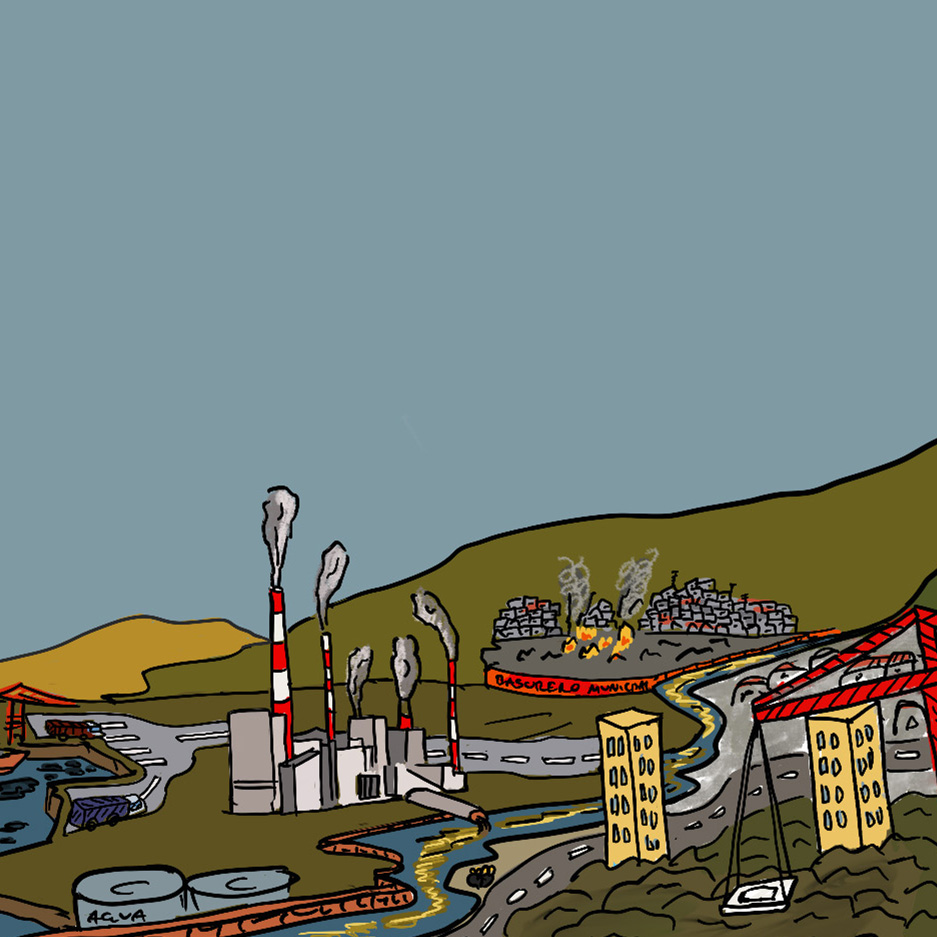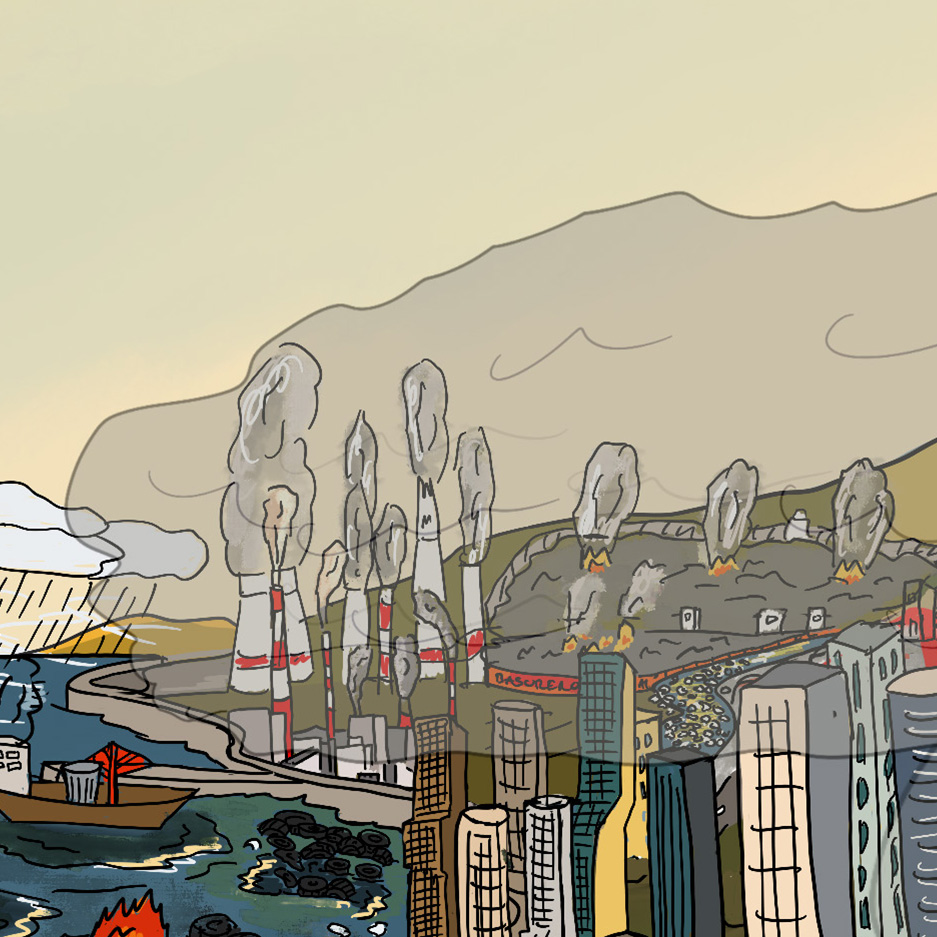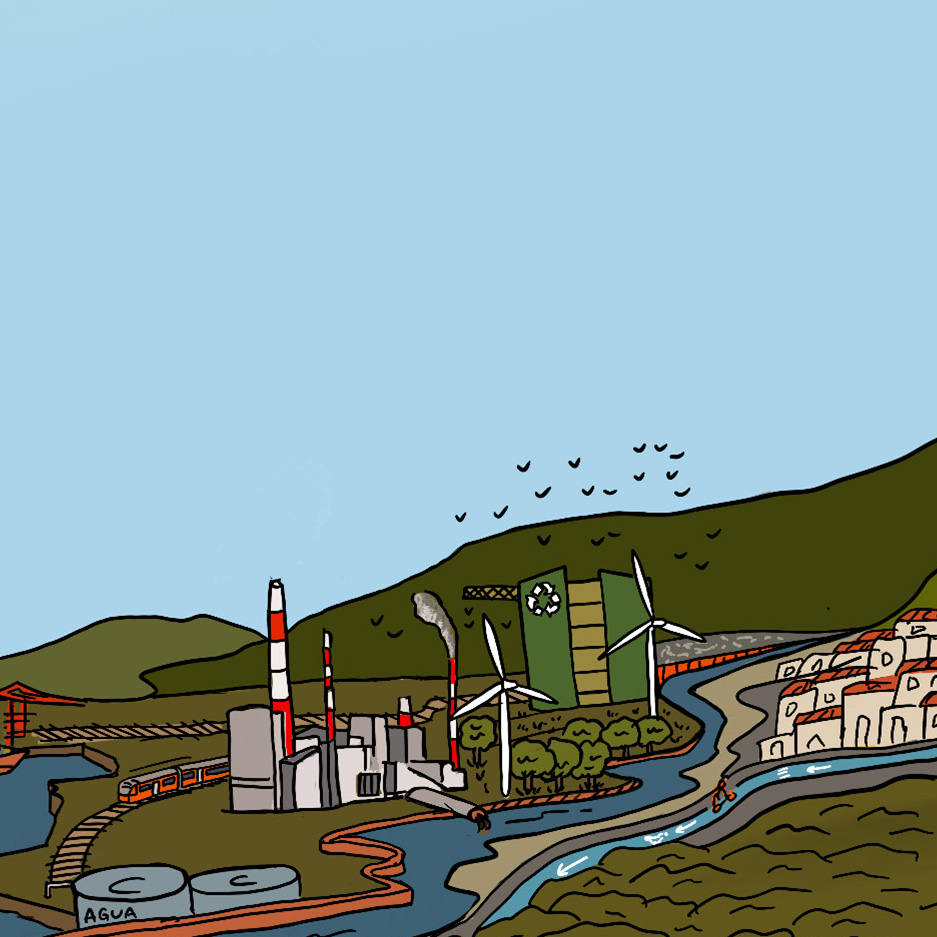
Present. Rubbish treatment.
Landfill enlargement barely keeps up with growing waste disposal needs. A waste-to-energy plant has not resolved things, and has led to more maintenance needed for roads, because of more loaded traffic to the waste area.
There’s concern that the growing landfill is seeping toxic effluents to the ground water and nearby river; there’s informal employment eeking out income from pecking over the dump trucks coming in, but there’s fierce competition among the collectors, leading to disorganised scrounging—ultimately spilling waste over areas where the scrounging happens.
Limited recycling is happening, but the population doesn’t take it seriously; “What’s in in for me?” is the question people ask about waste-reduction initiatives.

